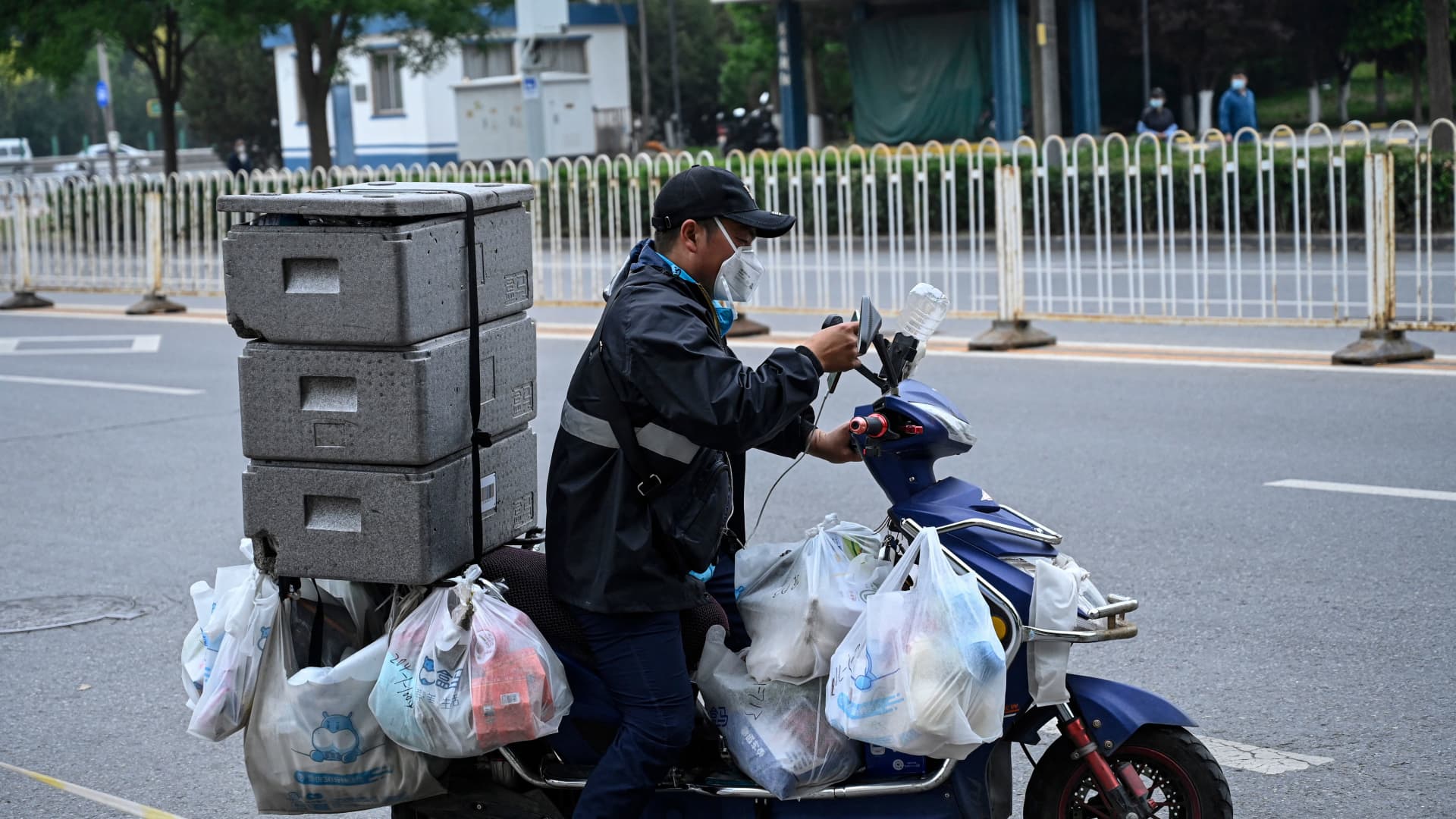BEIJING — China’s consumer and producer prices rose more than expected in April, according to data from the National Bureau of Statistics released Wednesday.
The consumer price index rose by 2.1% last month from a year ago, boosted by a surge in energy and fresh vegetable costs. The reading topped expectations for a 1.8% rise forecast by a Reuters poll.
April’s figure was also the highest since November’s 2.3% print and well above the 18-month average of 0.9% consumer price inflation. China’s official CPI target for 2022 is “around 3%.”
“The main driver was a pick up of food prices due to rising transportation costs and restocking demand from tighter Covid restrictions,” Goldman Sachs analysts said in a report Wednesday.
“In year-over-year terms, we expect CPI inflation to rise and PPI inflation to fall on base effects,” the report said. “Sequentially CPI inflation may moderate in the near term as the inflationary pressures from food prices might ease with the improved Covid situation in China.”
Since March, mainland China has tightened travel restrictions and imposed stay-home orders in many parts of cities to contain the country’s worst Covid outbreak since early 2020. The controls have prevented many factories from producing at full capacity or moving goods between suppliers and customers.
Fresh vegetable prices rose by 24% year-on-year in April, while fresh fruit prices increased by 14.1% during that time. Pork prices, a major contributor to China’s CPI, posted a relatively rare 1.5% increase from the prior month for a more moderate year-on-year drop of 33.3%.
Fuel prices for transportation climbed by 28.4% from a year earlier, reflecting recent surges in oil and commodities prices.
Sluggish consumer demand
However, China’s rising consumer price index doesn’t mean locals face the same pressure that Americans do.
U.S. consumer prices have surged by their most since the early 1980s, even when stripping out food and energy. The April figure due out later on Wednesday is forecast to remain near the decades-high increase of 8.5% seen in March.
In China, excluding food and energy prices, the consumer price index rose by a muted 0.9% in April from a year ago.
Longer-term, analysts warn that overall consumer demand in China remains depressed due to uncertainty about future income.
Some businesses have even cut prices to attract buyers.
The Caixin Services PMI for April — a monthly sentiment survey — found that businesses cut prices at the fastest pace since May 2020, “with a number of firms lowering their fees in order to attract new business amid muted demand conditions,” a release said.
A similar survey of manufacturers found that despite a sharp rise in the cost of production, selling prices increased only modestly as firms tried to remain competitive and attract new business.
Factory costs remain high
In April, China’s producer price index moderated for a fourth-straight month, rising 8% year-on-year. That was still above Reuters’ forecast for a 7.7% increase.
Within PPI, purchase prices rose far more quickly than so-called factory gate prices — the price of goods sold from factories for further manufacturing or sale to distributors.
That’s an indication that cost pressures are unevenly distributed across industries, said Bruce Pang, head of macro and strategy research at China Renaissance.
He said that means different businesses will face different kinds of impact on their profit margins.
There’s an “urgent need” for monetary and fiscal policy to provide targeted support for companies seriously affected by the pandemic, Pang said in Chinese, translated by CNBC.
China’s central bank and other authorities have announced a number of measures to support growth in the last few weeks, although the scale of those measures has generally disappointed markets.
“The Covid lockdowns have eroded the effectiveness of policy easing, and muted demand more than supply,” Morgan Stanley’s Chief China Economist Robin Xing and a team said in a note Tuesday.
In late April, the firm cut its GDP target for China to 4.2% based on expectations that Covid controls will disrupt supply chains will last longer. That’s down from the prior forecast of 4.6%.
